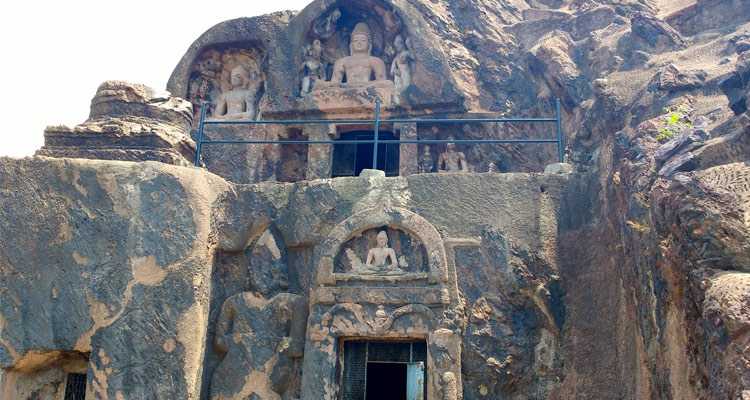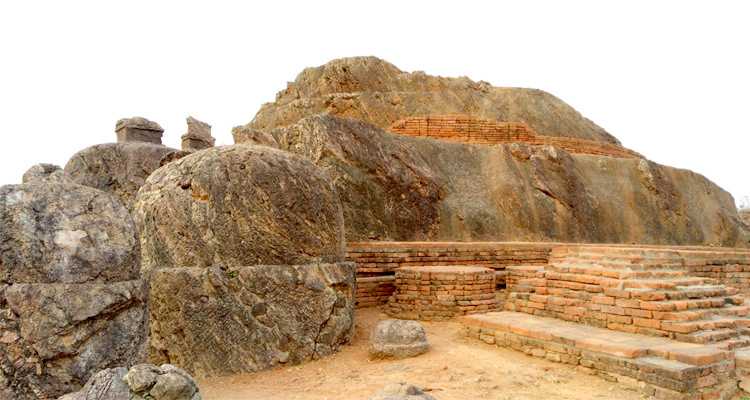Bojjannakonda
Weather :
Tags : Temple
Timings : 9:00 AM - 6:00 PM
Entry Fee : No entry fee
Bojjannakonda, Visakhapatnam Overview
Bojjannakonda is a small group of six rock-cut caves that dates back to 4th Century AD when Buddhism was flourishing in the region. The caves have beautifully carved statues of Gautam Buddha which draw tourists and believers for its aesthetic and religious importance. The caves nearby also have stupas where Buddhist monks would meditate. The area comes under the maintenance of the Archaeological Survey of India. It gives insights into the practise of Buddhism in Visakhapatnam. The stone stairway leading to the caves is well maintained and secured with railings, although it is not much of a climb.
Bojjannakonda set of caves is located on Bojjannakonda Hill. The caves form a notable establishment of Buddhists in the region and stand out for its large group of monolithic stupas that surround a Maha Stupa which has a dome made of bricks. The three phases of Buddhism - Mahayana, Hinayana and Vajrayana are featured on the caves, chaityas and the monasteries. The surroundings are tranquil and motivate many to meditate when they visit the attraction.
Read More on Bojjannakonda
How To Reach Bojjannakonda
Architecture & Structure of Bojjannakonda

Bojjannakonda has six rock-cut caves, a group of stupas surrounding a maha stupa and chaityas surrounding the maha stupa. The caves have panels that have been meticulously sculptured. The main cave is comparatively larger and has sixteen pillars. It has a monolithic stupa right in the centre, creating a pathway around the stupas for pradakshina. The dome of several stupas is made of bricks. Two of these brick stupas hold stone relic caskets or miniature stupas.
An umbrella is carved on the ceiling over the stupa. This umbrella was originally connected to the top of the stupa. However, after years of weathering the shaft that connected the umbrella to the stupa is no longer seen. The cave has two levels - the top level has a carving of Gautam Buddha where he can be seen sitting in a lotus position/ meditating posture with attendants around him. At the foothills, an image of a Buddhist Monk, Harati, can also be found.
History of Bojjannakonda

Bojjannakonda marks one of the most significant Buddhist establishments in Andhra Pradesh during between 4th and 9th century CE. During that time, the village, Sankaram, was known as Sangharam, meaning Boudha-Arama or Vihara. Between 4th and 9th century, Mahayana, Hinayana and Vajrayana flourished in Andhra Pradesh. The caves were found only after an excavation that was carried out in 1907 - 1908. Alexander Rim led the excavation. Items like mud utensils, seals, pots, terracotta beads, gold, lead and copper coins, and metal figures were recovered from the caves. An idol of Kalabhairav and an image of Harati were also later on discovered during the excavation.
Top Hotel Collections
Top Hotels Near Bojjannakonda
Bojjannakonda Reviews

Have a Question on Bojjannakonda?

experience.